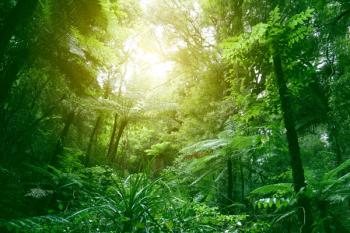
- Advances in UV-vis-NIR Spectroscopy
- Volume 36
- Issue S12
Advances in UV-Vis-NIR Spectroscopy: A Peer-Reviewed Special Issue
This issue is a compilation of five peer-reviewed articles on the combined application of UV-vis-NIR spectral data with advanced chemometrics.
We present this special issue of Spectroscopy on ultraviolet (UV), visible (vis), and near-infrared (NIR) spectroscopy. This special issue features five specially selected and peer-reviewed papers that highlight exciting and important new developments in the potential of laboratory and remote sensing, combined with chemometric methods, to the application of UV-vis-NIR spectral data. Combining UV-vis-NIR spectra data and chemometrics provides a set of powerful analytical tools capable of discriminant analysis, classification, identification, and quantitative analysis for a variety of important applications. The UV-vis-NIR spectral regions reveal the details of electronic and molecular information for solid, liquid, and gas phases for natural and synthetic materials. The advantages of these spectral regions often include little or no sample preparation, capabilities for remote sensing, and rapid data acquisition and analysis. When multipurpose machine learning and other chemometric approaches are used for data analysis, the results can be surprising and dramatic. Many of these papers often include detailed chemometric terms and equations and we hope you will enjoy exploring these data analysis methods for your own use. The selected papers for this digital issue of Spectroscopy include the specific aspects of spectral data collection, data preprocessing, and chemometric model development.
Our first paper demonstrates classification and identification of different wood species using a portable near-infrared spectrometer, combined with four spectral pretreatment methods and three pattern recognition methods. Additional chemometric tools are used for comprehensive evaluation of classification model accuracy and complexity.
In the second paper, an effective NIR spectroscopy method is described, using a series of machine learning approaches for wavelength variable selection, to rapidly discriminate grape seed oil adulteration. Grape seed oil has shown beneficial effects for consumers as a dietary supplement, and there is now an interest in measuring grape seed oil for oil quality and potential.
In our third selected paper, a vis-NIR spectral reflectance method is proposed that measures leaf chlorophyll using a wavelet analysis algorithm approach. Here, spectral reflectance is shown as a non-destructive method that is applicable to remote sensing for chlorophyll content in a crop. Measured chlorophyll content is a recognized indicator for photosynthetic capacity, growth cycles, and degrees of stress on plant ecosystems.
Our fourth paper proposes a vis-NIR remote sensing method to determine copper content in mining areas as well as inferred measurement of the environmental impact of surface mining methods. This analytical method is important due to depletion of modern mineral resources from continuous exploitation and utilization, making it economically necessary to quickly identify and locate sources of low-grade copper ore.
In the final paper of this edition, a highly accurate and optimized UV spectroscopy method is proposed to simultaneously monitor nitrate and nitrite for rapid determination and continuous monitoring in environmental water applications. Recent regulations have been imposed to set legal limits of nitrate and nitrite in water worldwide, making accurate measurements of these analytes an important water quality analysis requirement.
Articles in this issue
Newsletter
Get essential updates on the latest spectroscopy technologies, regulatory standards, and best practices—subscribe today to Spectroscopy.




